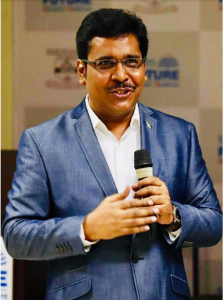Date: 14th July 2020
Time: 3:00 – 4:00 PM CEST, 1:00 – 2:00 PM UTC
Duration: 1 hour (40 min session and 20 min Question Answers)
Registration link: https://attendee.gotowebinar.com/register/7324243184717036811
Brief about the session: The humongous amount of digital data available in the media ecosystem makes it important for journalists to create sense out of this massive information for the consumers. This is often made possible by explaining the background, significance and context of the information. Decoding the ‘signal from the noise’ is probably more important for news consumers than access to information itself. The availability of massive data is both a blessing and a challenge to journalists. They do not have to rely on sources who have access to information for news leads, the amount of data available can be readily accessed to create news stories on every conceivable topic. Data is used both as a source and a tool. However this requires newer skills from journalists to access reliable data, analyse it and present it in a manner which is useful for consumers.
The session will deal with accessing public data, analysing it through simple spreadsheet techniques and creating attractive stories out of it through standard narrative journalism techniques.
 Name of the Speaker: Dr. Uma Shankar Pandey
Name of the Speaker: Dr. Uma Shankar Pandey
Designation: Associate Professor and Head
Affiliation: Department of Journalism and Mass Communication, Surendranath College for Women, Kolkata
Dr. Uma Shankar Pandey is Associate Professor and Head, Department of Journalism and Mass Communication, Surendranath College for Women, Kolkata. Before joining academics, he was a senior Journalist with English daily The Asian Age, Kolkata.
An Editorial Board Member of a number of International Journals, he has published over 20 papers and has authored and edited four books.
He has conducted training programmes and workshops for corporate communicators, teachers, journalists and students at different parts of the country on themes including Data Journalism, Conversational Intelligence, Media Literacy, Social Network Analysis, Journalists’ Job Satisfaction, Framing of Election news etc.
